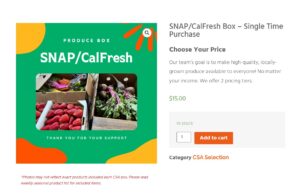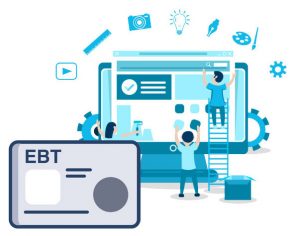The Biden administration recently announced an increase, as of October 1, in the Supplemental Nutrition Assistance Program (SNAP) benefits, the former U.S. Food Stamp Program. SNAP benefits will increase by 25%, from pre-pandemic average monthly amounts of $121, raised to $157. For the 42 million Americans who receive SNAP benefits, that means an extra $36 per person per month and more money to spend at small to midsized grocery and convenience stores.
Previously, government benefits were dispensed as “Food Stamps.” In the early 2000s, food stamps were replaced as technology advanced the program to Electronic Benefits Transfer (EBT) cards. Each month the EBT account gets electronically reloaded with a qualified cash value for eligible recipients to be able to purchase essential staples such as produce, meat, poultry, fish, dairy, bread, cereals, snacks, drinks (nonalcoholic) and even seeds and plants for growing household food. In order to qualify for EBT, a household must have a certain net income, with assets below certain limits. Factors taken into consideration include whether a household has an elderly or disabled family member.
In addition to providing existing EBT users with more monthly funding, the government program’s upcoming increase in funds may encourage new signups for benefits, further increasing opportunities for stores to capitalize on these customers. This country’s pool of EBT-eligible people is expanding, and as the founder of a company that provides EBT processing solutions, I don’t think the trend is about to die down anytime soon. I believe the number of EBT recipients will most likely grow, especially given the economic downturn caused by the pandemic and other factors of changing demographics.
With the increased funding and potential for a greater pool, independent business owners may want to consider accepting EBT cards if they don’t already.
Are you considering accepting EBT?
If a brick-and-mortar store doesn’t yet accept EBT, I think that now is an ideal time to sign up as a SNAP retailer and take advantage of all the benefits EBT acceptance has to offer. About 248,000 stores across the United States are already participating as SNAP providers. Accepting EBT gives merchants the opportunity to increase revenue. Consumers that patronize businesses that take EBT, at which they can purchase food staples, may also spend money on nonEBT items. By offering EBT, a store may attract more foot traffic and increase overall sales.
Revenue generation is a clear benefit of accepting EBT, but there are other advantages as well: In an area where a heavy segment of the population relies on EBT, a store may gain a reputation as an establishment in tune with local residents’ needs and a valuable fixture within the community. By offering this public service, the public, in return, may offer the store shopper loyalty.
BusinessApplying to accept EBT seems to be an obvious wise choice for merchants, particularly in the grocery and convenience arena. Many credit card processing companies include EBT card payment acceptance. (Disclosure: My company provides this solution.) But offering SNAP benefits can become costly due to high EBT transaction fees. Credit card companies are scrambling to offer more approachable systems of EBT payment processing that allow merchants to accept unlimited EBT payments from customers without suffering from high fees. Look for an EBT program with a good monthly fee and little or no transaction costs.
Getting Started
To participate, a retailer must apply and meet federal standards and guidelines. To maintain the integrity of the program, the USDA Food and Nutrition Service diligently evaluates and monitors applicants.
The rules for being a SNAP provider and offering EBT are specific, and stores must apply and go through a qualification process in order to participate. Factors to consider before making the decision to accept EBT include evaluating whether selling EBT-eligible items will help increase the store’s revenue or complicate checkout without enough benefits to validate offering EBT. For example, to offer EBT items, a store may need to purchase refrigerators. EBT can include perishable essentials, so a store should assess whether stocking up EBT items in inventory is worth it. Some retailers, such as a hardware store, would not qualify as an EBT provider because, by default, they do not sell EBT items. However, many retailers nowadays are choosing to diversify their offerings to help increase foot traffic into the store.
SNAP stores must meet one of these two criteria: 1) A store must carry a certain amount of inventory of staple foods, specific quantities of perishable and nonperishable or 2) a store must have over 50% of total gross retail sales from the sale of staples such as vegetables, fruits, dairy, meat, poultry, fish, bread and cereals.
Business leaders may face some challenges in this process. A store can be rejected for the program if it doesn’t meet one of the required criteria of carrying staples inventory or providing documentation of enough sales. The application process includes careful inspection o confirm that the store is in compliance and legitimately qualifies to be an EBT provider. If the application isn’t completed fully and properly, it may also be rejected.
With over 42 million people in this country using the EBT program, a grocery, convenience store or gas station minimart could be missing out if it doesn’t consider the value of offering EBT, especially at this time when the demand is so high. By participating as a SNAP provider, a store can broaden its customer base and be recognized as an establishment that respects the community.







